Animating The Inanimate, by Pippa Goodhart
For years I have taught people wanting to write books for children, and offered a critiquing service, most particularly picture books, and I’ve tended to be fairly dogmatic in saying that writing about characters who are inanimate objects doesn’t work for those books. But now I’ve changed my mind.Why was I so anti the Olly the Oak Tree, Larry the Lamp Post, and Bronwen Broccoli sorts of characters?
They tend to inhabit a particular kind of story; stories designed to carry a factual lesson for small children. I’ve read dozens of stories about fruit and vegetable characters which are supposed to encourage children to eat their ‘five a day’. I’ve read numerous stories about oak trees who experience the ecological life cycle of a tree and the seasons. Or they are making a stand against wicked developers who want to chop the tree down. The problem with both those basic story ideas is that they muddle fact and fiction. If you meet and get fond of a cuddly character called Bronwen Broccoli, you probably don’t warm to the idea of boiling and eating her! If the ultimate baddy is somebody who chops down a tree, then what are you doing, reading about it in a book that is made from the pulp of a chopped down tree?! Even following the natural life cycle of a tree will inevitably end in death, and these stories tend to fudge that uncomfortable truth. To me, the issues of healthy eating and the ecology and life cycle of a tree are best treated honestly, in beautiful imaginative books about reality, ie non-fiction. As to the inanimate object characters themselves, Larry the Lamp Post, Penny the Post Box, Willy the Washing Machine etc, are static, and that makes for a very static story, however lively the action around them, and that isn't good visually ...
… Unless you are wholehearted in your turning of an inanimate object into a human substitute, and animate them more fully, giving not just faces but limbs too. Two recent brilliant picture books have shown what can be done.
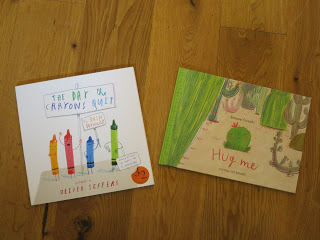
Hug Me is written and illustrated by Simona Ciraolo. The story is about Felipe (hooray, his name doesn’t alliterate with ‘cactus’!) whose cactus family like to behave ‘properly’ and ‘never trespass into another’s personal space’. Look at their prickles, and that message is clear. But little Felipe longs for someone to ‘put their arms around him’ and ‘give him a hug’. Anew character comes along, but he’s a balloon. The inevitable happens when balloon and prickly cactus get close, and that makes Felipe feel even worse. So he lives a lonely, solitary life … until he finds another lonely unhappy character, this time a stone.
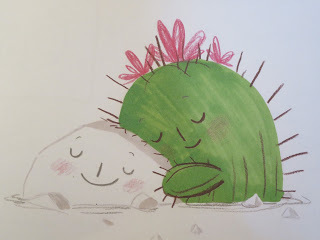
Stone and cactus characters can hug and make each other feel happy without a problem. It’s the beautiful logic of the story that really pleases. Hug Me is a first book by artist/writer Simona Ciraolo, and published by very new publisher Flying Eye Books.
Much higher profile is prize-winning The Day The Crayons Quit illustrated by Oliver Jeffers and written by Drew Daywalt (whose more usual work, interestingly, has been in film). In this story, the crayons have revolted against their child owner, Duncan. They all have complaints about being used too much, or not enough, or always for the same old things, and they’ve written him letters to express those feelings.
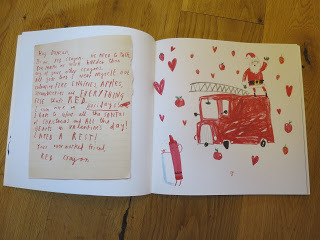
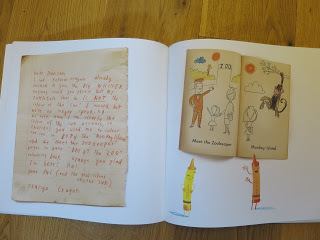 Duncan's response is to produce a stunning picture that makes full, and unobvious, use of all those colours.
Duncan's response is to produce a stunning picture that makes full, and unobvious, use of all those colours. 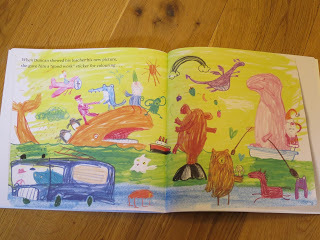
Children's imaginations make them happily leap into ‘believing’ that a cactus or a crayon can have human feelings and legs and arms. Maybe the secret to writing wonderful picture book stories about inanimate objects is simply to ignore the fact that in real life they are inanimate? Animate them into being almost-humans, but still living lives we recognise from their object existence. Then those characters become engaging and funny, and so do their stories. Or does that only work with inanimate objects which start with the letter ‘c’?! Are there other examples of really good picture books featuring characters which are things?
PS What is that instinct to make names of children’s book characters alliterative all about?Pippa Goodhart www.pippagoodhart.co.uk
Published on September 06, 2015 16:30
No comments have been added yet.



